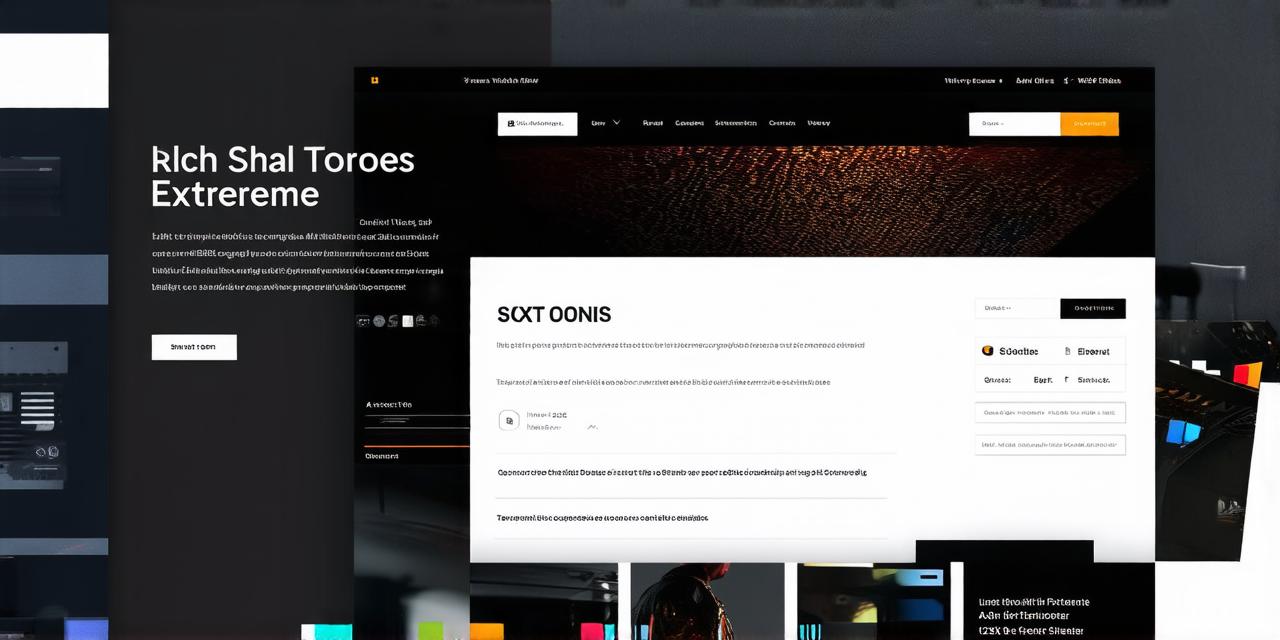How to effectively design websites for optimal user experience?
BlogDesigning a website is not just about creating an online presence, it’s also about creating a positive experience for your users. A website that is easy to navigate, loads quickly, and looks visually appealing can make all the difference in keeping visitors engaged and coming back for more. In this article, we will discuss some of the best practices for designing websites that deliver an optimal user experience.
1. Understand Your Audience
Before you start designing your website, it’s important to understand who your target audience is. This includes their age, gender, interests, and goals. You can use analytics tools to gather information about your visitors, such as their demographics, browsing behavior, and preferences. Once you have a clear understanding of your audience, you can design a website that meets their needs and expectations.
Case Study: Dropbox
Dropbox is an excellent example of a website that was designed with its users in mind. They conducted extensive user research to understand how people work and what they need from a cloud storage solution. This led them to create a clean, simple, and intuitive interface that made it easy for users to upload, share, and collaborate on files.
2. Keep It Simple
When designing your website, it’s important to keep things simple. Avoid using too many colors, fonts, or animations, as they can be overwhelming and distracting. Instead, focus on creating a clean, minimalist design that is easy to navigate and use.
Case Study: Airbnb
Airbnb is another great example of a website that was designed with simplicity in mind. They kept their homepage simple and straightforward, allowing users to quickly search for and book accommodations. They also made it easy for hosts to create listings and manage their properties.
3. Optimize for Mobile
With more and more people using mobile devices to browse the web, it’s important to design your website with mobile in mind. This includes optimizing your site for smaller screens, using touch-friendly navigation, and making sure your content is easy to read on a mobile device.
Case Study: Starbucks
Starbucks did an excellent job of designing their website for mobile users. They created a mobile app that allows users to place orders, pay with their phone, and customize their drinks. The app also includes features like location-based ordering and personalized recommendations.
4. Make It Load Fast
A slow-loading website can be frustrating and lead to high bounce rates. To ensure your website loads quickly, optimize your images, minimize the use of heavy scripts and plugins, and use a content delivery network (CDN) to speed up page load times.
Case Study: Google
Google is known for its fast-loading pages, which is a big part of their success. They use various techniques to optimize their website, such as compressing images, minifying code, and using a CDN.
5. Use Clear Navigation
Clear navigation is crucial for a positive user experience. Make sure your website’s menu is easy to find and understand, and that it provides clear labels for each page. You can also use breadcrumb navigation or search bars to help users find what they are looking for quickly.
Case Study: Amazon
Amazon has one of the most complex websites on the internet, but they make up for it with their excellent navigation. They use a top menu that provides clear labels for each section of their site, as well as a sidebar with additional options and links.
6. Focus on Accessibility
Accessibility is important for ensuring that all users can access your website, including those with disabilities. This includes using alt tags for images, providing closed captions for videos, and making sure your website is keyboard accessible.
Case Study: Apple
Apple does an excellent job of designing their website with accessibility in mind. They provide alternative text for images, use clear and concise language, and make sure their website is easy to navigate with a keyboard.
Summary
Designing a website that delivers an optimal user experience takes time and effort. By understanding your audience, keeping it simple, optimizing for mobile, making it load fast, using clear navigation, and focusing on accessibility, you can create a website that is easy to use and enjoyable to navigate. Remember, a positive user experience is key to keeping visitors engaged and coming back for more.
